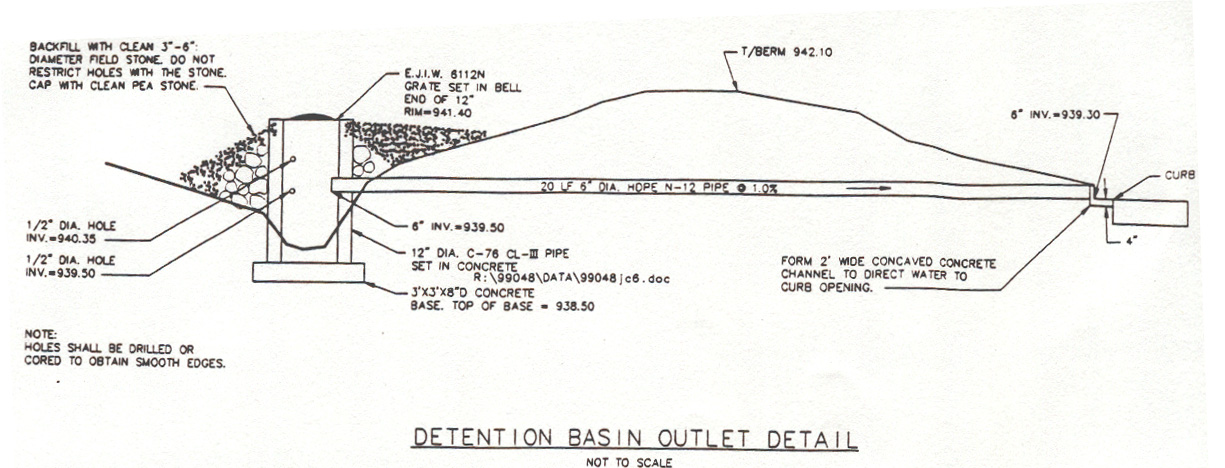

Detention Information
The original site plans did not include a detention system. The changes
to the surface area will only occur at the back of the lot. In the front,
the existing building will be used and undergo minor changes. Since, the
area that will be improved is less than 15, 000 square feet the developers
could get the Building Department's approval without having to install
storm water retention facilities.
5:673. Storm Water Retention Facilities
No person shall occupy any land which is the subject of a plat or site plan unless the storm water retention facilities indicated on the play or site plan are installed. Storm water retention facilities for sites for which the plat, site plan or site plan amendment is approved after November 1, 1978 shall meet the following standards:**From Chapter 63. Soil Erosion and Sedimentation Control...(9) Developments having new impervious improvements not greater than 15, 000 square feet are not required to have retention facilities as specified in this section. If subsequent cumulative improvements result in impervious surfaces greater than 15, 000 square feet, retention facilities must be installed for all improvements built after December 1, 1978.
When the Planning Commission reviewed the site they had concerns about detention, even though the site was up to code. The builders chose to modify their original plans after considering suggestions from the Planning Commission.
The Revised Plan
Below is a copy of the detail of the detention system that was added to the Fazoli site. This system is called a Riser Structure and is located in an island in the back parking of the restaurant (an example of this system can be seen at the Barnes and Noble on Washtenaw). The parcel of land slopes from west to east and the water flows into the depressed island.
The stones that can be seen on each site of the diagram slow down the water flowing into the system. This system has two filters or holes that also decrease the flow of water. The lowest hole acts is a First Flush and improves the quality of the water and filters off the oil and sediments in the water. The higher hole acts is a Bankfull system and spreads out the seepage of water. If the water level is above either of these points the Riser Structure has not effect and the water continues its downward movement to the front of the parcel. One wants to detain the flow of water, so that it does not end the street storm system when the water level is at it maximum. The present system can only accommodate:
First Flush V(ff.)= 1309 cf.To accommodate a 100-year Flood the present system would have to be increased nine times, which would mean creating a deeper depressed area.Bankfull V(ff.)= 370.36 cf.
If this was a new or virgin site it is likely that at the front of the parcel would an additional two Riser structures. That would be nine times as great as the present system in order to accommodate a 100-year flood.
Other Types of Detention Systems
--wetlands
--underground storage and tanks
--over sized pipes
--dish parking
--riser system, which is the most common because it is space and cost efficient.
Problems with the present system
As the water comes out of the riser system it flows out a pipe right into the parking lot. To make a more efficient system the water should have been discharged somewhere else instead of into the parking lot.
Why Detention is a concern with this particular parcel of land
The storm water from the Fazoli site will eventually end up in the Allen Creek Water Shed. Allen Creek is a troubled creek shed that has physical problems, which results in overflow and pollution concerns.
